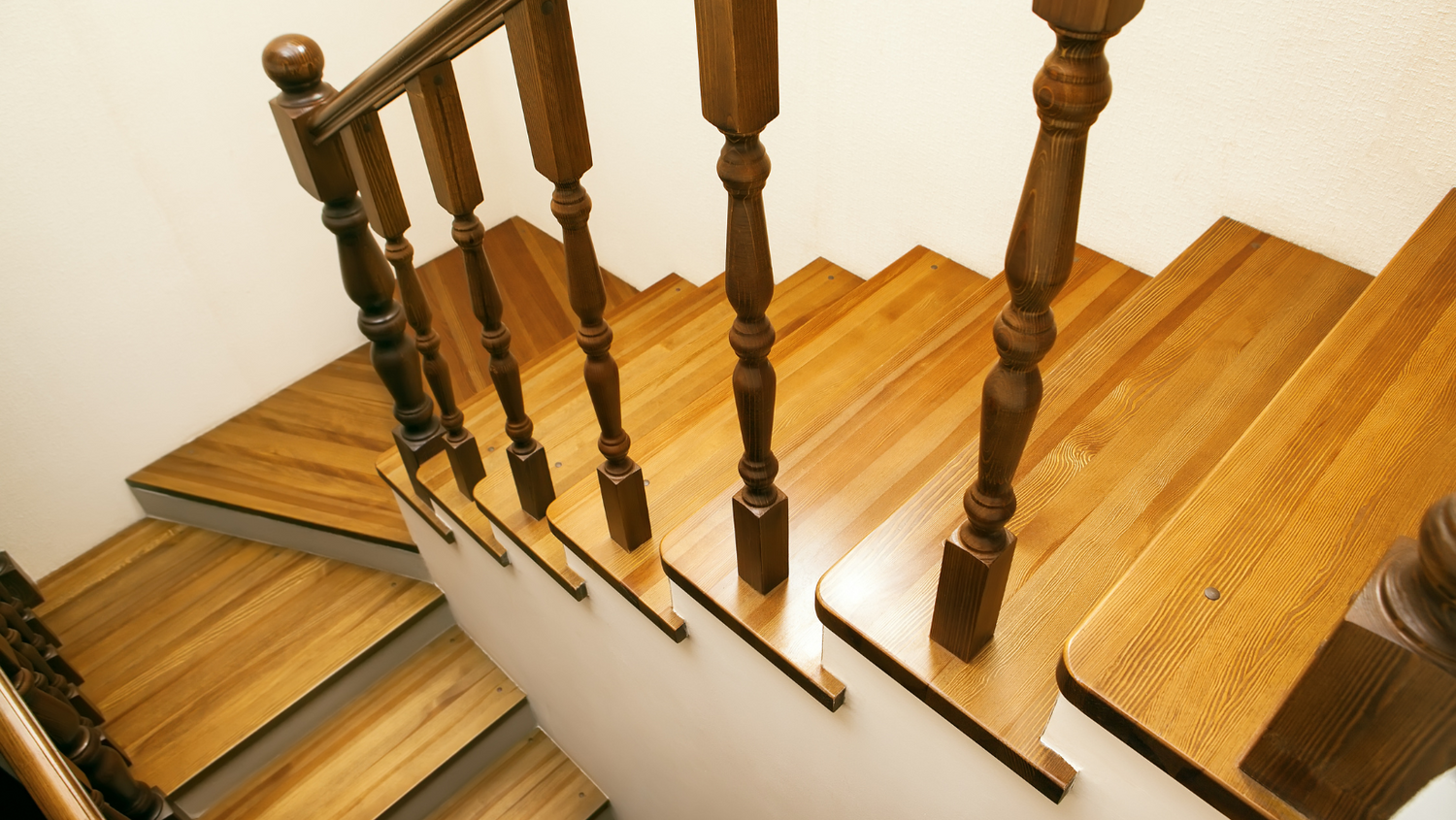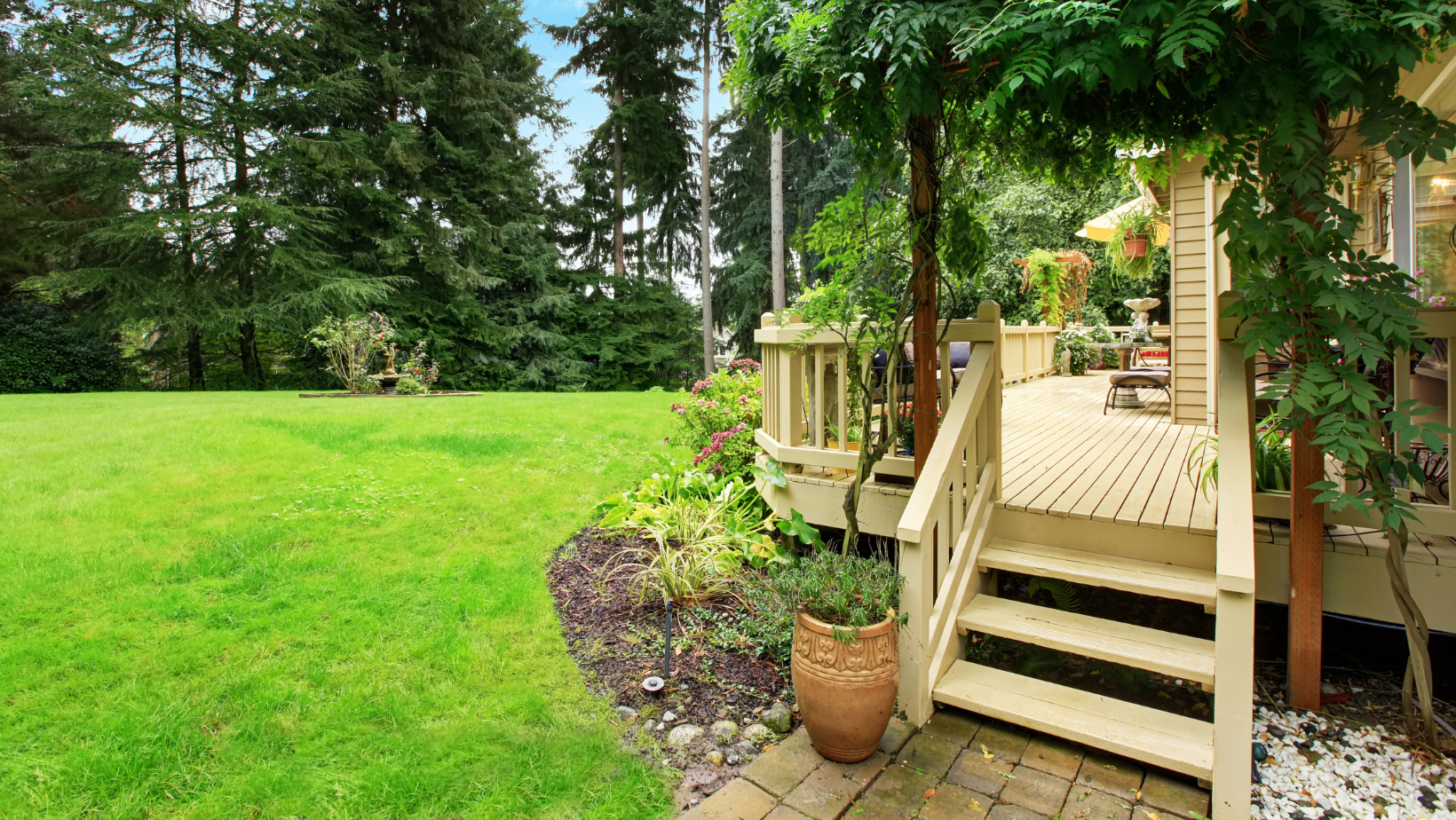Slipping on wood stairs is a serious safety concern for many homeowners.
If you're wondering what to put on wood stairs to prevent slipping, the best solutions include adding non-slip coverings like carpet stair treads.
These options provide traction while maintaining the beauty of your wooden stairs.
Wood stairs can be slippery, especially when polished or exposed to moisture.
Without proper traction, they can be dangerous for children, seniors, and pets.
Taking preventive measures now can help you avoid accidents and keep your home safe.
Why Slipping on Wood Stairs Is a Concern
Wood stairs are a popular choice due to their classic and elegant appearance.
However, their smooth surfaces can pose a significant slipping hazard, especially in high-traffic areas.
Without proper traction, even a small misstep can result in a dangerous fall.
The Slippery Nature of Wood
A common question homeowners ask is, are wooden stairs slippery?
The answer depends on the finish and condition of the wood.
Polished wood, in particular, tends to be slick, especially when exposed to dust, moisture, or natural wear.
Unlike carpeted stairs, wood does not provide much grip, making it easy to lose footing.
Common Causes of Slipping on Wood Stairs
Several factors contribute to the slipperiness of wood stairs:
-
Smooth, polished surfaces that lack natural traction
-
Moisture, dust, or dirt buildup that makes steps even more hazardous
-
Wear and tear over time, causing surfaces to become more slippery
-
Lack of a non-slip surface or protective covering
The Dangers of Slipping on Stairs
Slipping on wood stairs can lead to minor injuries like bruises or more severe consequences such as fractures and sprains.
In some cases, a fall down the stairs can be life-threatening.
For households with children, elderly individuals, or pets, taking action is even more critical.
A small investment in safety solutions now can prevent costly injuries and medical expenses later.
How to Fix Slippery Wood Stairs
If you’re wondering how to fix slippery wood stairs, the best approach is to enhance traction by adding a non-slip covering.
Carpet stair treads, rubber stair treads, and other solutions provide an easy way to improve safety without compromising aesthetics.
Adding Carpet Stair Treads
Carpet stair treads are a simple yet effective solution. They provide:
-
A soft, slip-resistant surface
-
Noise reduction, making stairs quieter
-
Various colors and designs to complement home décor
-
Comfortable cushioning underfoot
Using Rubber Stair Treads
Rubber stair treads are another great option, especially for homes with high foot traffic.
They offer:
-
Durable, weather-resistant material
-
Strong grip for improved traction
-
Easy cleaning and maintenance
-
Various textures and patterns for better safety
Additional Non-Slip Solutions for Wood Stairs
Carpet and rubber stair treads are not the only ways to improve stair safety.
There are additional solutions that can further enhance traction.
Anti-Slip Stair Tape
Non-slip stair tape is an easy-to-install solution that adds grip without covering the entire step.
It works well for both indoor and outdoor stairs and is available in various textures and colors.
Stair Runners
A stair runner is a long strip of carpet that runs down the center of the staircase.
It provides better traction while maintaining the elegance of wood stairs.
Applying a Non-Slip Coating
If you prefer to keep your stairs fully visible, a non-slip coating or anti-slip paint can be applied.
These coatings create a rougher surface, improving traction while preserving the look of the wood.
Installing Stair Rods
Stair rods hold carpet stair runners in place while also adding decorative appeal.
They help secure stair coverings, ensuring they don’t slip out of place.
Choosing the Right Stair Treads for Your Home
Selecting the best stair treads depends on your needs and preferences.
Carpet Stair Treads
Carpet stair treads work best for:
-
Indoor stairs
-
Homeowners who want a softer, decorative option
-
Reducing noise from foot traffic
Rubber Stair Treads
Rubber stair treads are ideal for:
-
Indoor and outdoor stairs
-
High-traffic areas
-
Homes that need a more durable, easy-to-clean option
Installing Carpet and Rubber Stair Treads
Adding stair treads is a simple DIY project.
How to Install Carpet Stair Treads
-
Clean the stairs thoroughly to remove dust and debris.
-
Apply adhesive backing to the underside of the carpet treads.
-
Position the treads securely on each step.
-
Press down firmly to ensure proper adhesion.
How to Install Rubber Stair Treads
-
Clean and dry the stairs before application.
-
Apply adhesive to the back of the rubber treads.
-
Align and position the treads carefully.
-
Press down firmly to secure them in place.
Maintaining and Cleaning Stair Treads
Regular maintenance ensures stair treads remain effective and long-lasting.
Best Practices for Maintaining Carpet Stair Treads
-
Vacuum regularly to remove dirt and dust.
-
Spot clean spills promptly to prevent staining.
-
Rotate treads periodically for even wear.
Best Practices for Maintaining Rubber Stair Treads
-
Sweep or rinse off debris to keep the surface clean.
-
Use mild soap and water for deep cleaning.
-
Avoid harsh chemicals that may damage the material.
Long-Term Safety Tips for Wood Stairs
While adding stair treads helps prevent slipping, there are additional safety measures to consider.
Keeping Wood Stairs Clean and Dry
Moisture and dirt can make wood stairs even more dangerous.
To keep them safe:
-
Sweep and mop regularly to remove dust and grime.
-
Use a dehumidifier in humid environments to prevent moisture buildup.
-
Immediately clean up spills to avoid creating slippery surfaces.
Improving Stair Visibility
Good lighting helps prevent missteps, especially at night.
Consider installing:
-
Motion-sensor lights near stairs
-
LED stair lighting for better visibility
-
Reflective stair strips to highlight step edges
Installing Handrails for Extra Support
A secure handrail provides extra stability and balance when using the stairs.
Ensure that:
-
Handrails are firmly attached to the wall.
-
They are at a comfortable height for all family members.
-
Both sides of the staircase have support, if possible.
Enhancing Safety with Proper Footwear
Wearing the right footwear can significantly reduce the risk of slipping on wood stairs.
Shoes and socks with proper grip provide better traction, especially on smooth surfaces.
Best Footwear for Wooden Stairs
-
Non-slip socks – Ideal for indoor use, these socks have rubber grips on the bottom for added traction.
-
Rubber-soled shoes – Sneakers or slippers with textured rubber soles offer excellent grip on polished wood.
-
Avoid smooth-bottom shoes – Leather-soled shoes or high heels increase the risk of slipping.
Using Stair Nosing for Extra Grip
Stair nosing is an overlooked but effective way to improve stair safety.
It provides an additional non-slip surface while protecting stair edges from wear.
Benefits of Stair Nosing
-
Adds traction – Reduces slipperiness by increasing friction on stair edges.
-
Protects stairs – Prevents chipping and extends the lifespan of wooden stairs.
-
Variety of materials – Available in rubber, metal, or wood for different aesthetic and functional needs.
By incorporating the right footwear and stair nosing, you
Steps To Success
Wood stairs can be beautiful but also hazardous if they are too slippery.
The best way to prevent accidents is to improve traction with solutions like carpet stair treads and rubber stair treads.
These options provide safety while maintaining the natural elegance of wood stairs.
If you’re wondering what to put on wood stairs to prevent slipping, consider the various non-slip options available.
Whether you choose stair treads, anti-slip coatings, or stair runners, the key is to find a solution that fits your home and lifestyle.
Investing in safety today can help prevent falls and injuries in the future.
Contact Us Today!
If you’re looking for premium-quality stair treads that enhance both safety and aesthetics, Oak Valley Designs offers handcrafted options designed for durability and style.
-
Website: https://oakvalleydesigns.com/
-
Phone: 706.331.0315
-
Email: info@oakvalleydesigns.com
-
Address: 30 River Ct SW Bldg E Cartersville, Ga 30120
Take the first step toward a safer home today.




